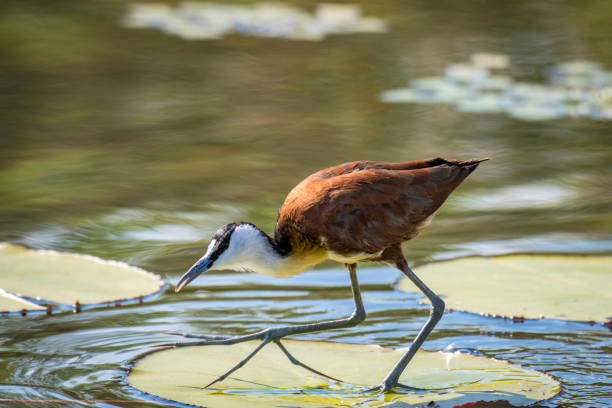Water lilies dance gently as soft footsteps barely disturb the tranquil surface. The Jacana bird, affectionately known as the “Jesus bird,” boasts unusually long toes that allow it to walk on water and glide effortlessly over aquatic plants. These stunning birds are more than just inhabitants of wetlands; their vibrant colors and intriguing behaviors make them a testament to the wonders of evolution.
Let’s dive into the world of the Jacana bird. We’ll explore its fascinating biology, quirky behaviors, unique adaptations, and its important role in conservation. The Jacana showcases unusual gender dynamics and a lifestyle that’s as colorful as it is rare among birds.
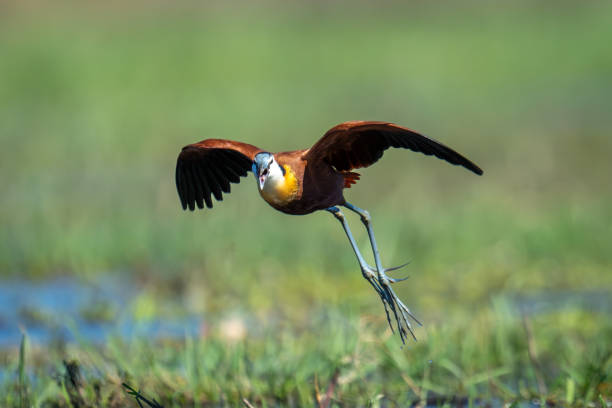
Table of Contents
Description
Jacanas are fascinating medium-sized water birds known for their unique long toes and claws, which allow them to stroll across floating plants without a worry of sinking. Their bodies are perfectly designed for aquatic life, and their feathers showcase a vibrant array of colors that vary by species, including shimmering blacks and greens, warm russet browns, and pure snowy whites.
Typically, Jacanas measure between 15 to 30 cm (6 to 12 inches) in length, with females generally being larger than their male counterparts. They sport sharp, pointed bills and often have a fleshy shield adorning their foreheads. While their wings are broad, they aren’t built for long flights. Instead, when they feel threatened, Jacanas prefer to dash across lily pads rather than take to the air.
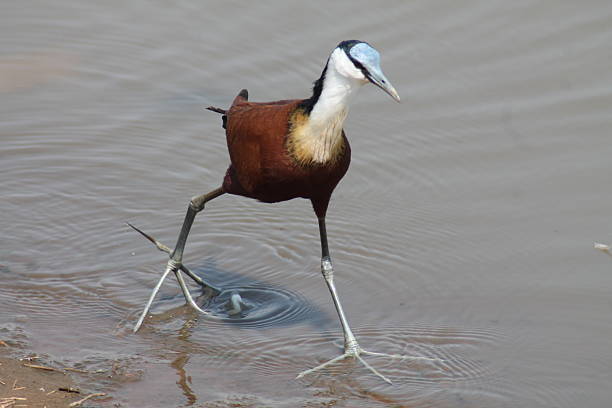
Scientific Classification
| Taxonomic Rank | Classification |
|---|---|
| Kingdom | Animalia |
| Phylum | Chordata |
| Class | Aves |
| Order | Charadriiformes |
| Family | Jacanidae |
| Genera | Jacana, Actophilornis, Hydrophasianus, Irediparra, Metopidius, Microparra |
| Common Name | Jacana Bird |
| Type | Wading bird |
| Bird/Mammal | Bird |
Subspecies of Jacanas
There are eight extant species of Jacanas found globally. Some of the most notable include:
- Wattled Jacana (Jacana jacana) – South and Central America
- Northern Jacana (Jacana spinosa) – Mexico to Panama
- African Jacana (Actophilornis africanus) – Sub-Saharan Africa
- Comb-crested Jacana (Irediparra gallinacea) – Southeast Asia to Australia
- Pheasant-tailed Jacana (Hydrophasianus chirurgus) – South and Southeast Asia
- Bronze-winged Jacana (Metopidius indicus) – Indian Subcontinent
- Madagascar Jacana (Actophilornis albinucha) – Madagascar
- Lesser Jacana (Microparra capensis) – Central Africa
Each species exhibits similar adaptations but occupies distinct ecological niches and geographic ranges.
Distribution
Jacanas are fascinating birds that thrive in tropical and subtropical wetlands all over the globe. You won’t find them in Europe or North America, with the exception of a few regions in Mexico. Here’s a quick overview:
- Africa – African Jacana, Lesser Jacana
- Asia – Pheasant-tailed, Bronze-winged Jacanas
- South America – Wattled Jacana
- Central America – Northern Jacana
- Australia & Oceania – Comb-crested Jacana
- Madagascar – Madagascar Jacana
These birds are strongly associated with warm, shallow wetlands rich in floating vegetation.
Habitat
Jacanas prefer freshwater habitats with calm or slow-moving waters, including:
- Marshes
- Swamps
- Flooded grasslands
- Riverbanks
- Lakeshores
- Paddy fields
They are rarely found in brackish or saltwater environments. Floating plants like water lilies, lotus, and duckweed are important. They provide walking platforms and nesting grounds for wildlife.
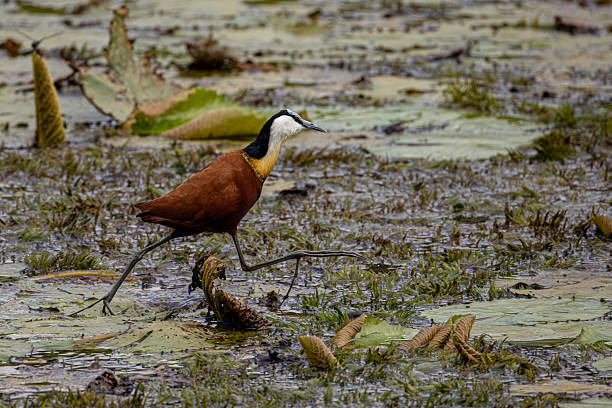
Diet
Jacanas are omnivorous foragers, though primarily insectivorous. Their diet includes:
- Insects (dragonflies, water beetles)
- Spiders
- Small crustaceans
- Mollusks
- Seeds
- Aquatic plant parts (algae, shoots)
They carefully choose their food from lily pads or the water. Their sharp bills show great skill.
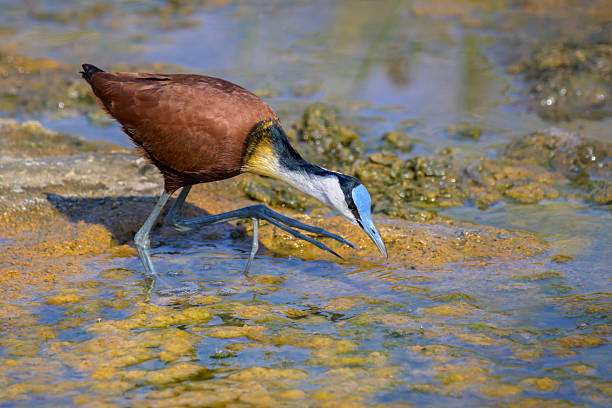
Behavior
Jacanas exhibit some of the most unusual behaviors in the avian world:
- Polyandry – Females mate with multiple males, a rarity among birds.
- Territoriality – Females are territorial and control a harem of males.
- Parental Role Reversal – Males incubate eggs and raise chicks.
- Skittish Movement – They flee by running on lily pads rather than flying.
- Vocalizations – Sharp squawks and whistles are used for communication.
Jacanas are active during the day and tend to be solitary when they’re not in breeding season. You’re more likely to hear them than see them, especially when they’re hiding out in dense aquatic plants.
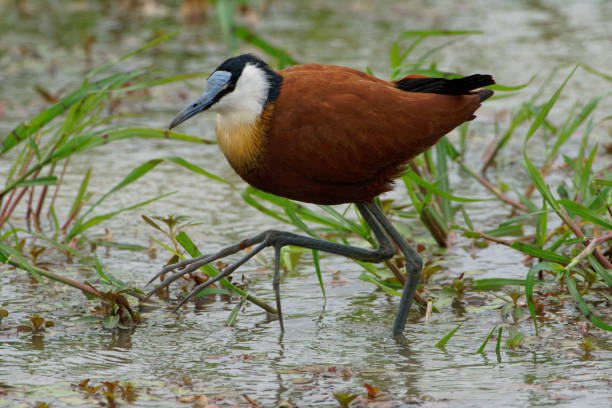
Lifespan
In the wild, Jacanas typically have a lifespan of around 5 to 7 years. However, some species can live much longer when they’re in protected environments or captivity. Unfortunately, they face significant threats from predators, habitat destruction, and climate-related flooding, which can really limit their lifespan.
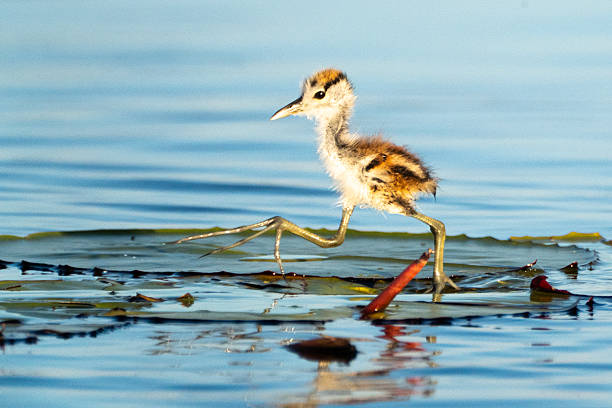
Reproduction and Lifecycle
Courtship
Females initiate courtship, often pursuing smaller males with displays of aggression or vocalizations. Once a male is receptive, mating occurs repeatedly.
Egg Laying and Incubation
- Clutch Size: 3–5 eggs
- Egg Color: Brown or olive with black squiggles
- Incubation Period: 22–28 days
- Incubator: Male exclusively
Males take incubation seriously. They adjust the eggs with their wings and breast feathers to keep the temperature just right.
Chicks
- Precocial: Born with feathers and the ability to walk/swim
- Follow the Father: Male leads them and teaches foraging
- Parental Care Duration: 4–6 weeks
Chicks can hide underwater, leaving only their bill out. This helps them avoid predators. It’s a smart survival trick.
Predators
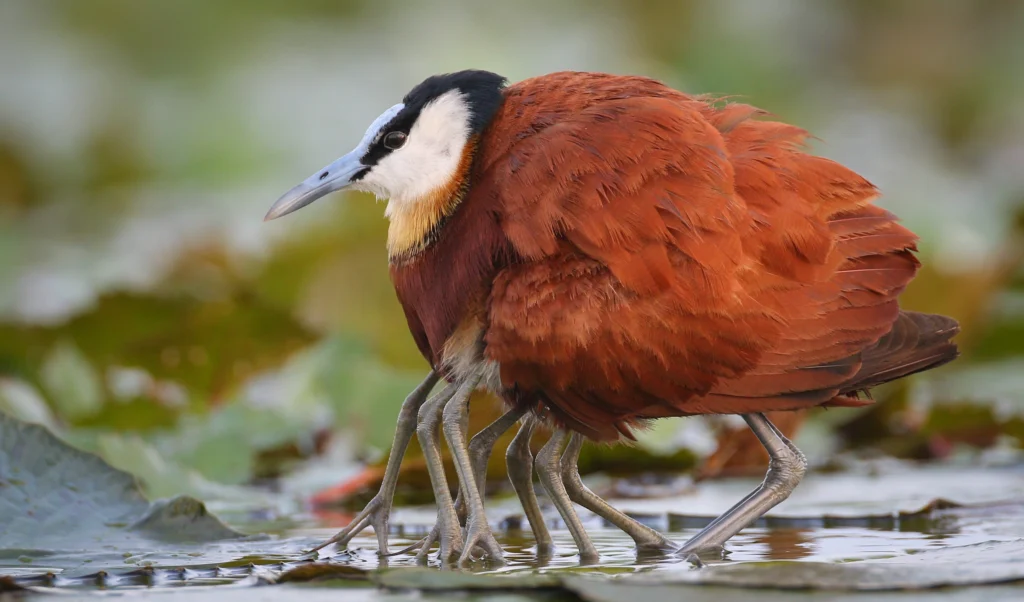
Jacanas face various natural threats, including:
- Birds of prey (hawks, herons)
- Snakes
- Large fish (when chicks fall into open water)
- Monitor lizards
- Humans (indirectly, via habitat destruction)
Eggs and chicks are very vulnerable. Adults use camouflage and quickly escape on lily pads.
Nest and Nesting Habits
Jacanas create floating nests using aquatic plants and debris. They cleverly anchor these nests to lilies or reeds. The nests are:
- Small and concealed
- Constructed by the male
- Lightweight yet stable
If water levels rise, the male will rebuild or relocate the nest to protect the clutch.
Mating Season
Jacanas breed during the wet season, which varies by region:
- Africa – Rainy months, usually May–October
- Asia – Monsoon season, June–September
- Central/South America – Corresponds to regional rainy cycles
- Australia – December–March
The increase in aquatic vegetation during rains provides optimal nesting conditions and food.
Breeding System
One of the Jacana’s most defining traits is its polyandrous breeding system. Here’s how it works:
- A dominant female holds a large territory.
- Within this territory, she mates with multiple males.
- Each male builds a nest and incubates a separate clutch.
- The female continues to lay more eggs, often with different partners.
This unusual role reversal makes Jacanas a unique case study in evolutionary biology.
Adaptations
Jacanas are marvels of evolutionary adaptation:
- Long Toes: Their signature adaptation, ideal for walking on floating plants.
- Light Body Mass: Prevents them from sinking.
- Flexible Legs: Extend far back on the body for better balance.
- Wing Spurs: Some species have small spurs for defense.
- Precocial Chicks: Born ready to fend for themselves.
- Cryptic Coloration: Helps adults and chicks blend into vegetation.
- Nest Mobility: Nests can be relocated if water conditions change.
Conservation Status
Most Jacana species are classified as Least Concern by the IUCN, but some populations are at risk due to:
- Wetland drainage
- Pollution
- Agricultural encroachment
- Climate change impacts
The Madagascar Jacana is Endangered. There are fewer than 1,000 left.
Conservation efforts focus on:
- Wetland protection
- Monitoring populations
- Limiting pesticide use
- Educating local communities
Cultural Significance
In local folklore and symbolism:
- Jacanas are often associated with grace and balance.
- The “Jesus bird” nickname adds religious mystique.
- In South America, they feature in native stories about gender and nature.
Their role reversal has sparked interest among ethologists and feminist biologists. They are exploring natural gender roles.
Interesting Facts
- Did you know some fascinating facts about Jacanas? For starters, Jacana chicks have a unique trick—they can “play dead” by collapsing and lying completely still!
- During the breeding season, the Pheasant-tailed Jacana grows a long tail that resembles that of a pheasant, which is quite a sight.
- These birds are among the rare few that actually live on water but don’t swim much at all.
- They’re also fantastic recyclers when it comes to nesting, often using old materials to build new nests.
- And here’s a cool fact: male Jacanas can incubate their eggs while walking, thanks to their special body structure!
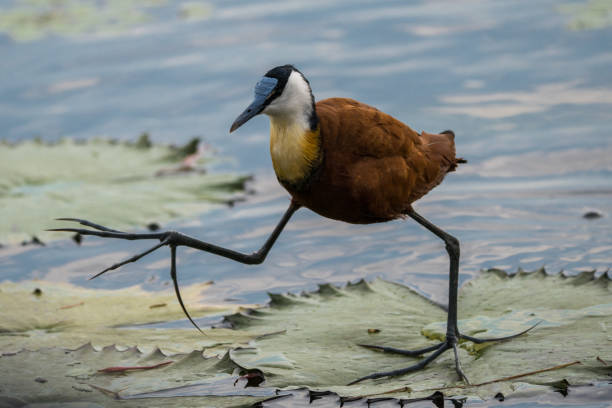
Final Thoughts
The Jacana bird defies expectations in almost every way. It flips gender roles. It glides across ponds like a ballet dancer. It also supports life in delicate wetland ecosystems. Each toe-tap on a lily pad shows nature’s cleverness. It reminds us how adaptation brings beauty. Birds can charm us, even in the quiet shallows, with their intricate ways.
Protecting the Jacana means saving our wetlands. This helps preserve biodiversity, culture, and the beauty of life on the lilies.
Q: Why are Jacanas called “Jesus birds”?
Because they appear to walk on water, thanks to their long toes distributing weight on lily pads.
Q: Are Jacanas endangered?
Most are not, but some species like the Madagascar Jacana are threatened by habitat loss.
Q: Can Jacanas fly?
Yes, but they prefer to run across vegetation and rarely fly unless threatened.
Q: What do Jacana chicks eat?
Mostly insects, with occasional plant material, guided by the father bird.

